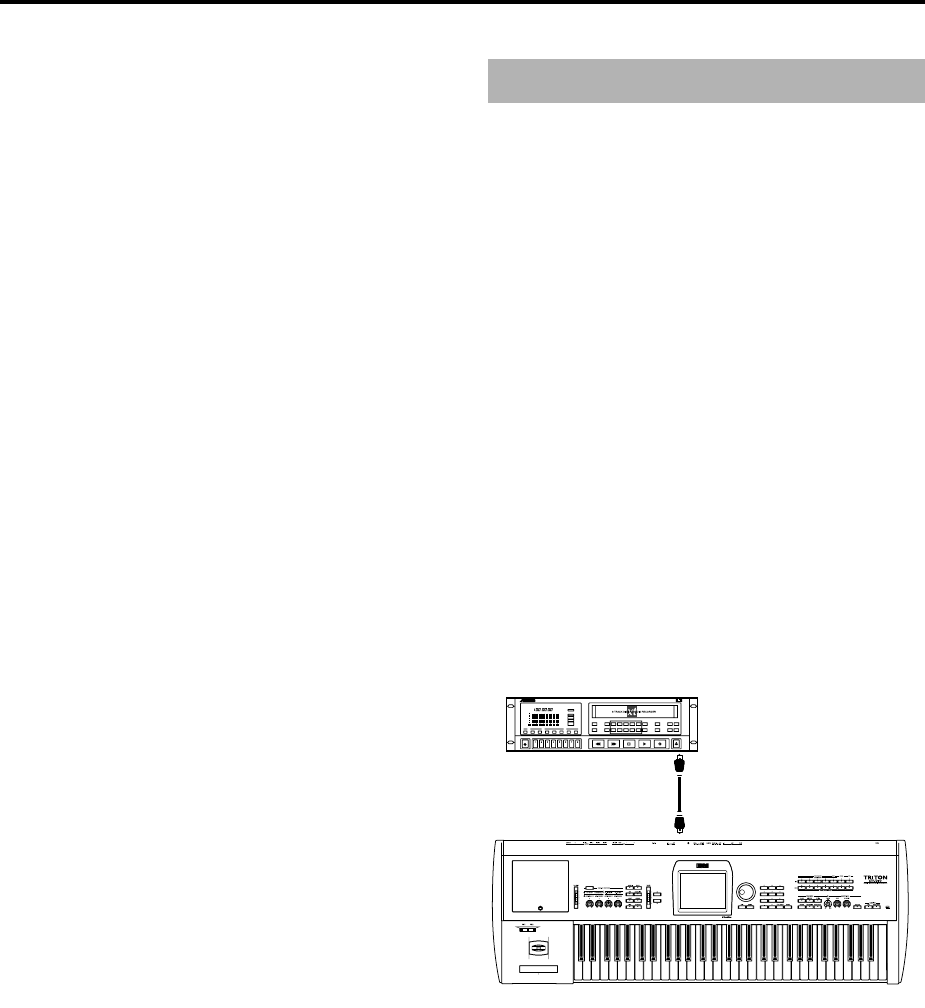
300
Also, when you execute “Rate Convert” (Global 0–3G),
“Save to Std MIDI File” (Disk 0–2F) or similar com-
mand to save to CD-R, the file may not be written in a
continuous state even if it is copied from media with a
fast access speed such as hard disk. If data in this state
is converted into ISO9660 format, it will be in the
divided file format supported by ISO9660 level 3.
Such data cannot be read by devices that do not sup-
port loading of divided files, such as the TRITON and
some computers. In the case of a computer, this CD-R
data can be read if you can install ISO9660 level 3 com-
patible reader software or packet writing software.
The EXB-DI option provides an ADAT™ Compatible Opti-
cal Output which digitally outputs the audio signal from the
TRITON STUDIO, and also allows the digital signal to be
synchronized with another digital audio device.
For an explanation of the DIGITAL OUT connector and
WORD CLOCK IN connector, refer to BG p.7.
In this owner’s manual, “ADAT” is used as a general desig-
nation for ADAT compatible multi-track recorders such as
the Alesis ADAT.
Example connections
Digitally recording the sound of the TRITON STUDIO
to an ADAT
1 Use an ADAT-Optical cable (sold separately) to connect
the TRITON STUDIO’s Digital OUT connector to the
ADAT’s Digital INPUT.
For connections, use an ADAT-Optical cable manufac-
tured by Alesis Corporation or an optical cable for CD/
DAT (both sold separately).
2 Set the TRITON STUDIO’s “System Clock” (Global P0:
0–2a) to Internal.
3 Set the word clock source of the ADAT to “DIG 48 K.”
For details refer to the manual for the connected ADAT.
EXB-DI option
DIGITAL IN
DIGITAL OUT
ADAT
TRITON STUDIO


















